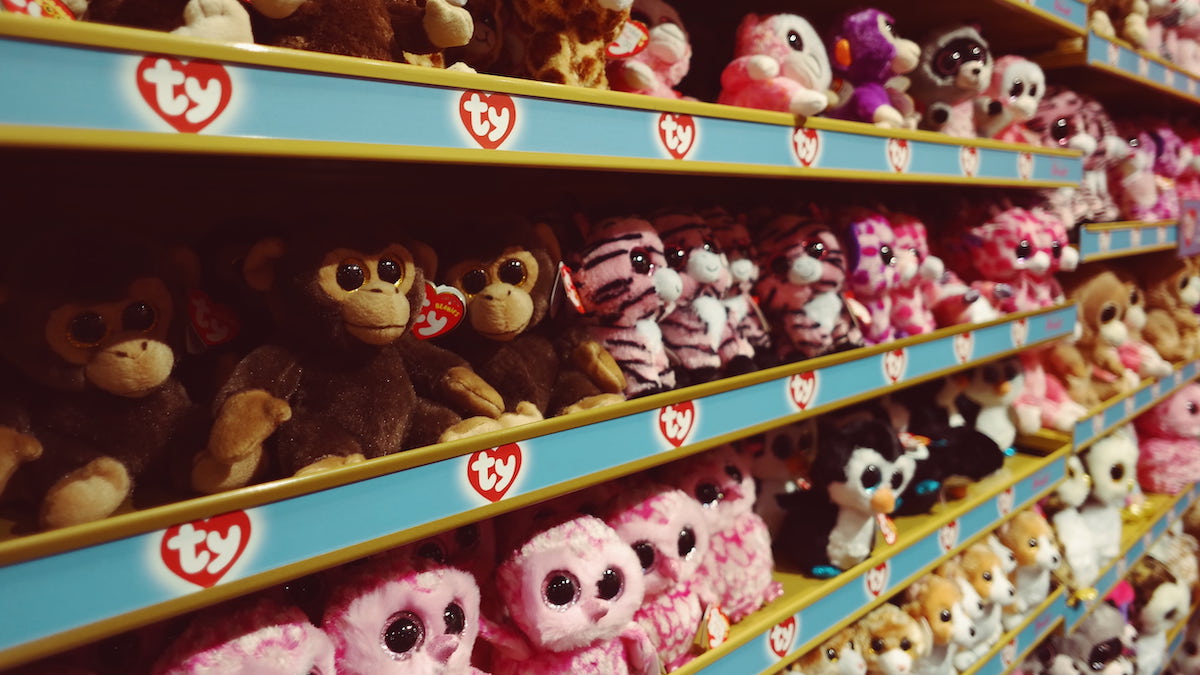Americans born between about 1975 and 1995 will unquestionably remember the Beanie Babies crazy of the late 1990s. It was everywhere – those cute little plush toys were even prominent in divorce proceedings, as people assumed they were fighting over their early retirements. The full story of the Beanie Babies craze is probably worth its own article, but they were a perfectly handled example of a manufactured craze.
Who Is Ty Warner Really?
The owner of the parent company – Ty Warner (now you now why the company was called Ty) – had worked in the toy industry for a while before coming up with this particular toy idea. He wanted to go through small retailers and thus avoided the big stores like Toys R Us or Target. He also forced scarcity better than seemingly anyone in recent memory: Warner restricted the quantity of Beanie Babies produced and then limited the quantity that any particular store could purchase, which piqued the interest of collectors. He also announced that certain characters would be retired, additionally inflating their collectible value.
It worked. Beanie Babies became the hottest item in the country – and perhaps the universe, right next to Tickle Me Elmo – around 1995-96. Ty was also the first company to use the internet as a direct-to-consumer selling method. As if that weren’t enough, the resale market was so big that eBay estimated that Beanies made up 10% of all sales at the peak of the craze.
As you might expect, Ty Warner made some money off of this. However, he’s a quiet, reclusive guy who doesn’t give many interviews or make public appearances. That said, he’s a shrewd businessman.
One of the brilliant moves Warner made was to package his lesser-known toys in with Beanie Babies. If you were running a toy store that sold Beanies, and you had an allotment of 100 Beanie Babies for the month, you also had 300 other Ty brand toys in your shipment, which were more or less non-negotiable. If you wanted the throngs of people to come to your store and fight over the Beanie Babies, you paid the premium of the additional, less popular Ty items. That also meant more profits for the company.
On the bright side, Ty Warner has been involved in lots of charitable donations. He’s given millions to the Andre Agassi Foundation, donated a million Beanie Babies to children in Iraq, donated $300 million worth of toys to the Red Cross, and much more. On the less bright side, he was also cited for tax evasion and paid a $53 million fine. People contain multitudes, I guess.
Since Warner is so quiet and keeps to himself, his Wikipedia page doesn’t make it clear whether his holdings – the focus of this article that we’re about to reach – are even his or belonging to a company headed by him. It must be a company, of course, since it’s called Ty Warner Hotels & Resorts, but while you can find employees of the company on LinkedIn, the company itself doesn’t have a page on there to see how many employees it has. Even the company’s official website includes minimal details about itself.
Luckily for us, press releases save the day.
In 2004, when Warner was finishing up the purchase of another of his world-class resorts – Las Ventanas al Paraiso in Mexico – the press release noted the following:
- Warner was worth about $6 billion
- Ty Warner Hotels & Resorts was “founded and is solely owned by Ty Warner”
- The company also owns the Four Seasons Hotel in New York City
- Other properties include the Kona Village Resort in Hawaii, the San Ysidro Ranch, the Four Season Biltmore, and the Coral Casino Beach and Cabana Club
- There’s more: It also mentions that Warner owns the Sandpiper Golf Course and the Montecito Country Club
Of course, a 20-year-old press release is hardly gospel, but the barebones company website lists all but the Hawaii property as still being part of the portfolio.
Not bad for a guy who is now just about broke.
Just kidding, he was estimated as worth $2.3 billion in 2020. He’s gonna be okay.
